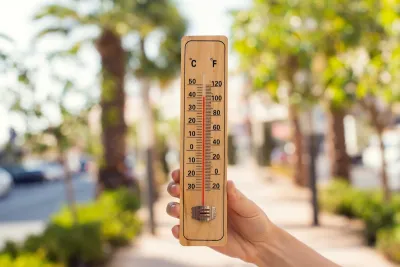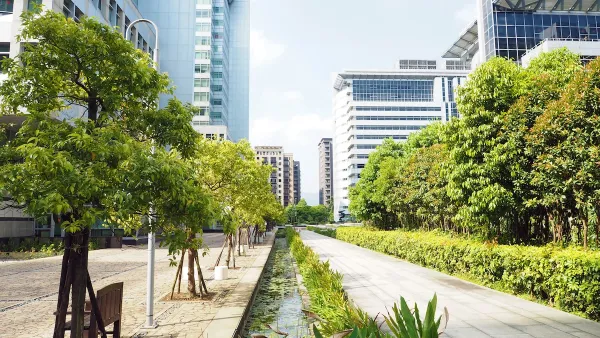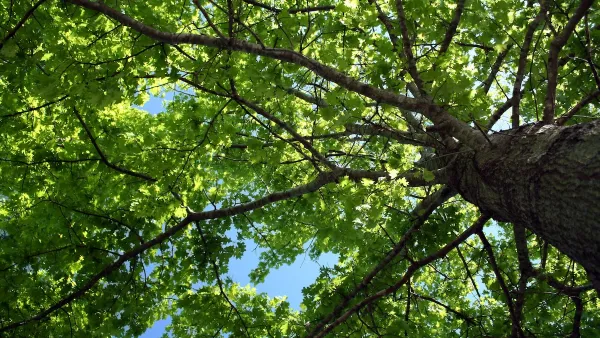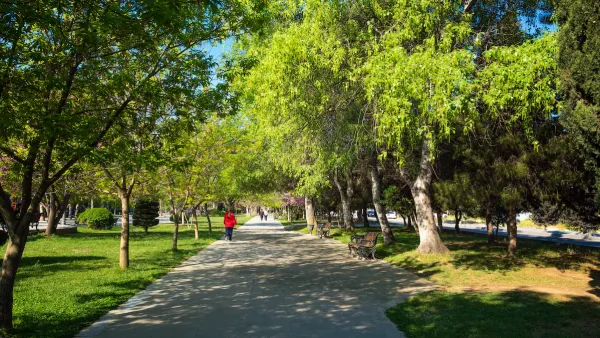A robust tree canopy can help reduce the urban heat island effect and lower air temperatures, but the impact is reduced as temperatures rise.

A new study from the University of New South Wales reveals that the ability of trees to combat overheating is reduced in extremely hot temperatures. “The findings, published in Sustainable Cities and Society, opens in a new window, show that conventional climate models overestimated the ability of trees to cool during heat waves by 60 per cent.”
The study poses a serious problem for cities relying on planting trees as a key part of their heat mitigation strategy. “It’s not to say that tree planting initiatives aren’t important for heat mitigation, but that large-scale planting policies require careful consideration,” said one of the study’s co-authors, Professor Mattheos (Mat) Santamouris.
As Ben Knight explains in the article, trees typically reduce surrounding air temperatures by 1 to 2 degrees Celsius in the daytime by releasing vapor through their leaves and absorbing heat. In high heat conditions, trees limit their transpiration, a factor not accounted for in current climate forecasts.
In the study’s sample of eucalyptus trees in Sydney, two-thirds of the trees were overestimated in their cooling ability during extreme heat by 60 percent. “Prof. Santamouris says decision-makers need to be more selective about the types of trees used and their various temperature thresholds. Under extreme temperatures, trees can also emit high concentrations of Biogenic Volatile Organic Compounds (BVOCs) like Isoprene, which can harm air quality when they interact with other atmospheric pollutants.”
Santamouris also warns that urban trees need adequate irrigation to provide optimal cooling benefits.
FULL STORY: Trees may not cool cities during heat waves as much as we thought

National Parks Layoffs Will Cause Communities to Lose Billions
Thousands of essential park workers were laid off this week, just before the busy spring break season.

Retro-silient?: America’s First “Eco-burb,” The Woodlands Turns 50
A master-planned community north of Houston offers lessons on green infrastructure and resilient design, but falls short of its founder’s lofty affordability and walkability goals.

Delivering for America Plan Will Downgrade Mail Service in at Least 49.5 Percent of Zip Codes
Republican and Democrat lawmakers criticize the plan for its disproportionate negative impact on rural communities.

Test News Post 1
This is a summary

Test News Headline 46
Test for the image on the front page.

Balancing Bombs and Butterflies: How the National Guard Protects a Rare Species
The National Guard at Fort Indiantown Gap uses GIS technology and land management strategies to balance military training with conservation efforts, ensuring the survival of the rare eastern regal fritillary butterfly.
Urban Design for Planners 1: Software Tools
This six-course series explores essential urban design concepts using open source software and equips planners with the tools they need to participate fully in the urban design process.
Planning for Universal Design
Learn the tools for implementing Universal Design in planning regulations.
EMC Planning Group, Inc.
Planetizen
Planetizen
Mpact (formerly Rail~Volution)
Great Falls Development Authority, Inc.
HUDs Office of Policy Development and Research
NYU Wagner Graduate School of Public Service





























